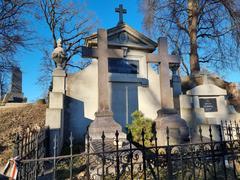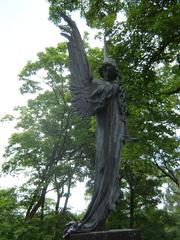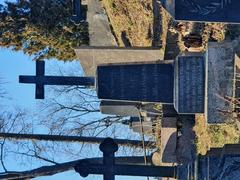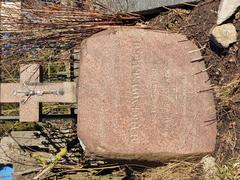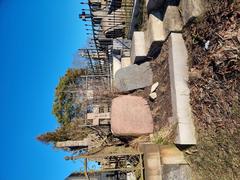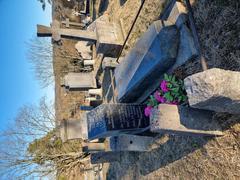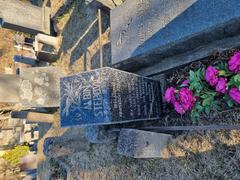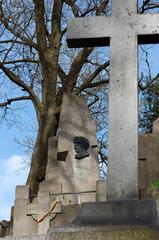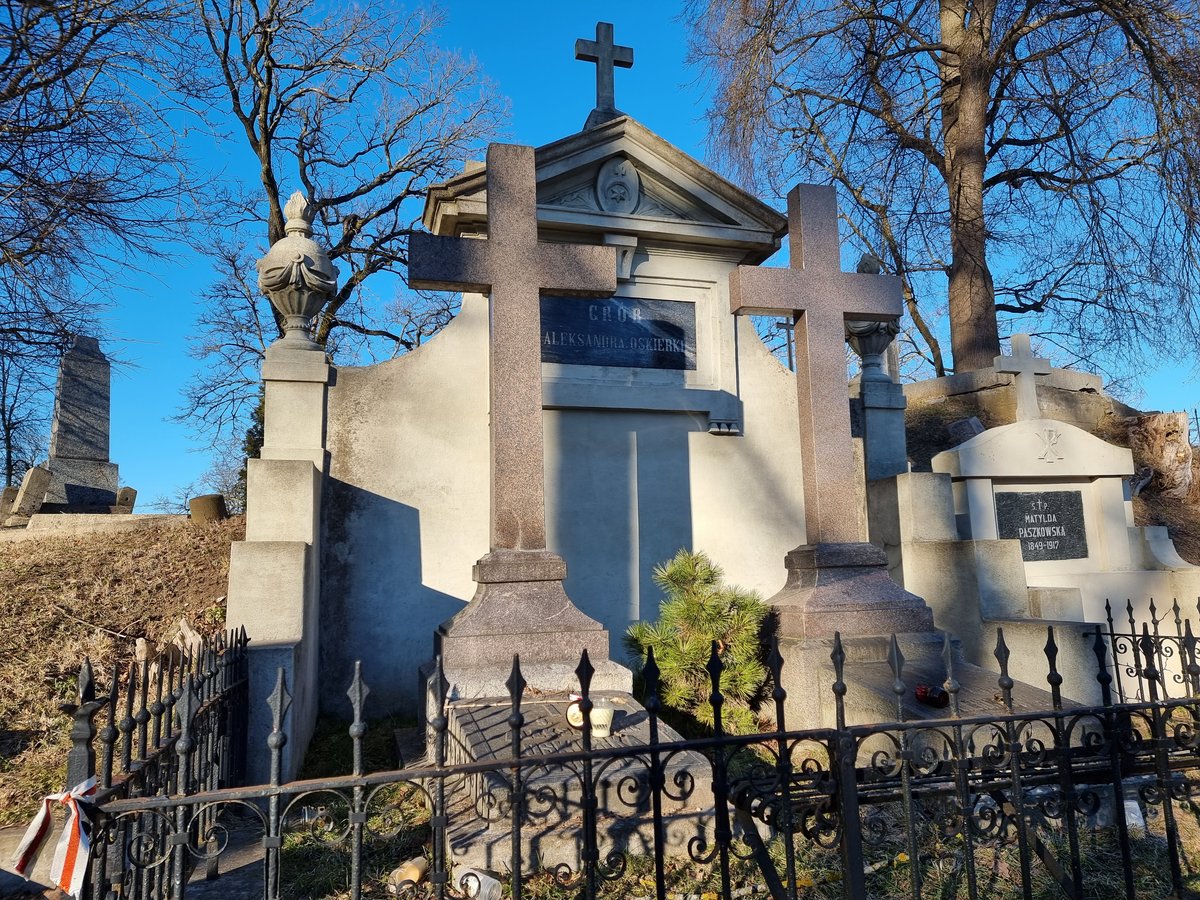
Rasos Cemetery Vilnius, Lithuania: Visiting Hours, Tickets, and Visitor Guide
Date: 14/06/2025
Introduction to Rasos Cemetery: Historical Significance and Visitor Overview
Rasos Cemetery (Lithuanian: Rasų kapinės; Polish: Cmentarz na Rossie) is one of Vilnius, Lithuania’s oldest and most culturally significant burial grounds. Established in 1801, with origins dating to 1769, it reflects the city’s evolving funerary traditions and multicultural past, serving as a repository for centuries of Lithuanian, Polish, Belarusian, and Russian heritage (neakivaizdinisvilnius.lt; efhr.eu). Spanning over 10 hectares in a scenic valley, the cemetery is renowned for its architectural variety, from neo-Gothic chapels to intricate mausoleums and sculptural tombstones.
Noteworthy figures rest here, including Lithuanian national revivalists, Polish statesmen like Józef Piłsudski (whose heart is interred in a dedicated mausoleum), acclaimed artists such as Mikalojus Konstantinas Čiurlionis, and soldiers from pivotal conflicts of the 19th and 20th centuries (govilnius.lt; vilnius-relax.lt). Multilingual epitaphs highlight the city’s diverse communities.
Despite periods of neglect, especially during the Soviet era, restoration since Lithuanian independence has revitalized Rasos Cemetery as both a historical monument and an active site of remembrance (cmentarznarossie.sztuka.edu.pl; efhr.eu). This comprehensive guide offers essential visitor information—hours, admission (free), accessibility, and navigation tips—alongside key historical insights, highlights, and recommendations for nearby attractions. For deeper engagement, guided tours and virtual resources are available (govilnius.lt; vilnius-tourism.lt).
Table of Contents
- Introduction
- Historical Overview
- Visitor Information
- Nearby Attractions
- Notable Sites and Points of Interest
- Visitor Etiquette & Seasonal Tips
- FAQs
- Preservation and Community Involvement
- Summary & Recommendations
- References
Historical Overview
Founding and Early Development
Rasos Cemetery’s beginnings are closely linked to Vilnius’s urban expansion at the turn of the 19th century. Officially established in 1801—after a 1799 ban on city-center burials for health reasons—it occupies a picturesque valley with burial traditions stretching to 1769 (neakivaizdinisvilnius.lt; justmovingaround.com).
Expansion and Architecture
The cemetery quickly grew, adding the Hill of Literati (1814) and New Rasos Cemetery (1847). Its neo-Gothic chapel and bell tower (1796) are architectural highlights, while the grounds—crisscrossed by winding paths and ancient trees—provide a tranquil, almost park-like atmosphere (govilnius.lt; artsandculture.google.com).
Multicultural Significance and Notable Burials
Rasos Cemetery is a microcosm of Vilnius’s diversity. It is a Polish national necropolis and a resting place for Lithuanians, Belarusians, Russians, and Jews. Notable burials include:
- Józef Piłsudski’s Heart: Entombed near his mother, a powerful symbol of Polish-Lithuanian ties.
- Mikalojus Konstantinas Čiurlionis: Famed Lithuanian artist and composer.
- Eustachy Tyszkiewicz: Historian and museum founder.
- Tadeusz Wróblewski: Lawyer and library founder.
- Soldiers: From the Polish-Soviet War, January Uprising, and WWII.
The “Hill of Literati” and book smuggler memorials further honor cultural defenders (govilnius.lt).
Artistic and Architectural Diversity
Gravestones range from neoclassical to modernist. Notable memorials include the angel statue on Iza Salmonowicz’s tomb (1903) and Józef Montwiłł’s grave (1911). Distinctive 19th-century shrines, stelae, and modernist monuments enrich the landscape (artsandculture.google.com).
Challenges and Preservation
Closed in 1967 under Soviet rule, Rasos suffered neglect and vandalism, with demolition narrowly averted in the 1980s. Restoration efforts since 1990, supported by Polish, Lithuanian, and EU organizations, have stabilized the site. An online tomb catalogue aids genealogists and visitors (cmentarznarossie.sztuka.edu.pl).
Visitor Information
Opening Hours & Admission
- General Hours: Daily, 8:00 AM–6:00 PM (may vary seasonally; confirm via official sources).
- Tickets: Free entry. Donations for preservation are welcomed.
Accessibility
- Terrain: Winding paths, hills, and some uneven sections. Main routes are generally accessible, but some areas may challenge wheelchair users.
- Restrooms: Limited on-site; use nearby facilities before visiting.
- Visitor Office: Located near the entrance; contact in advance for genealogical help (stephendanko.com).
Getting There
- Address: Rasų gatvė 13, Vilnius, Lithuania.
- Public Transport: Multiple bus/trolleybus routes stop nearby (Vilnius public transport).
- Taxi/Ride-Share: Widely available (e.g., Bolt, Uber).
- Walking: 20–30 minutes from Vilnius Old Town.
Guided Tours
- Arrangements: Book via local tourism agencies or the Vilnius Info Center.
- Highlights: History, notable burials, multicultural heritage, and art.
Visitor Tips
- Wear sturdy shoes for uneven paths.
- Bring a map or download one in advance.
- Early mornings/weekday visits are more peaceful.
- Respect the solemn atmosphere—no loud conversations, eating, or drinking.
Nearby Attractions
- Gates of Dawn: Historic city gate and shrine.
- Vilnius Old Town: UNESCO World Heritage site.
- Bernardine Gardens: Public park for relaxation.
- Užupis District: Artistic quarter nearby.
Notable Sites and Points of Interest
- Mausoleum of Mother and Son’s Heart: Józef Piłsudski’s heart and his mother’s grave.
- Hill of Literati: Resting place of writers, poets, and book smugglers.
- Mikalojus Konstantinas Čiurlionis’s grave: Revered by art and music lovers.
- Polish Home Army Graves: WWII memorials.
- Reburied Rebels (1863–1864): Central chapel.
Visitor Etiquette & Seasonal Tips
- Maintain respectful silence and avoid stepping on graves.
- Photography is allowed, but be discreet and avoid ceremonies.
- All Saints’ Day (Nov 1) and Day of the Dead (Nov 2): Candles and flowers fill the cemetery—visitors may respectfully join in traditions.
- Autumn and winter: Paths may be slippery; dress accordingly.
Frequently Asked Questions (FAQ)
Q: Are there entrance fees?
A: No, admission is free.
Q: What are the opening hours?
A: Generally 8:00 AM–6:00 PM; check official sources for updates.
Q: Is the cemetery wheelchair accessible?
A: Main paths are accessible, but some older sections may be difficult to navigate.
Q: Are guided tours available?
A: Yes, book through local agencies or the Vilnius Info Center.
Q: Can I take photos?
A: Yes, for personal use; avoid photographing mourners.
Q: How do I get there?
A: Public transport, taxi/ride-share, or a 20–30 minute walk from the city center.
Preservation and Community Involvement
Rasos Cemetery is protected as a cultural heritage site. Local community groups and schoolchildren regularly participate in clean-up efforts, especially ahead of major commemorations. Restoration is ongoing thanks to support from Polish and Lithuanian authorities and NGOs.
Summary and Visitor Recommendations
Rasos Cemetery embodies the history, cultural diversity, and artistic heritage of Vilnius. With free admission, accessible visiting hours, and a wealth of notable graves and monuments, it is a must-see for anyone interested in Lithuania’s past. Guided tours or audio guides (such as those offered by the Audiala app) provide deeper context and enhance the visitor experience. Pair your visit with nearby attractions like the Gates of Dawn and Vilnius Old Town for a fuller understanding of the city’s heritage (govilnius.lt; vilnius-relax.lt).
References and Further Reading
- The History of Rasos Cemetery – Neakivaizdinis Vilnius
- Rasos Cemetery Must-See Visiting Vilnius – EFHR
- Rasos Cemetery, Visit Vilnius – govilnius.lt
- Vilnius Cemetery Tour – Vilnius Relax
- Rasos Cemetery Online Catalogue
- Official Vilnius Tourism Website
Suggested Visuals
- Panoramic shots of the neo-Gothic chapel (alt: “Neo-Gothic chapel at Rasos Cemetery Vilnius”)
- Close-ups of Józef Piłsudski’s mausoleum and Hill of Literati
- Cemetery maps highlighting notable graves and sections
Call to Action
Enhance your visit to Rasos Cemetery and other Vilnius historical sites by downloading the Audiala mobile app for expert audio guides and interactive maps. Follow us on social media for updates on guided tours, special events, and new posts about Lithuania’s rich heritage.
